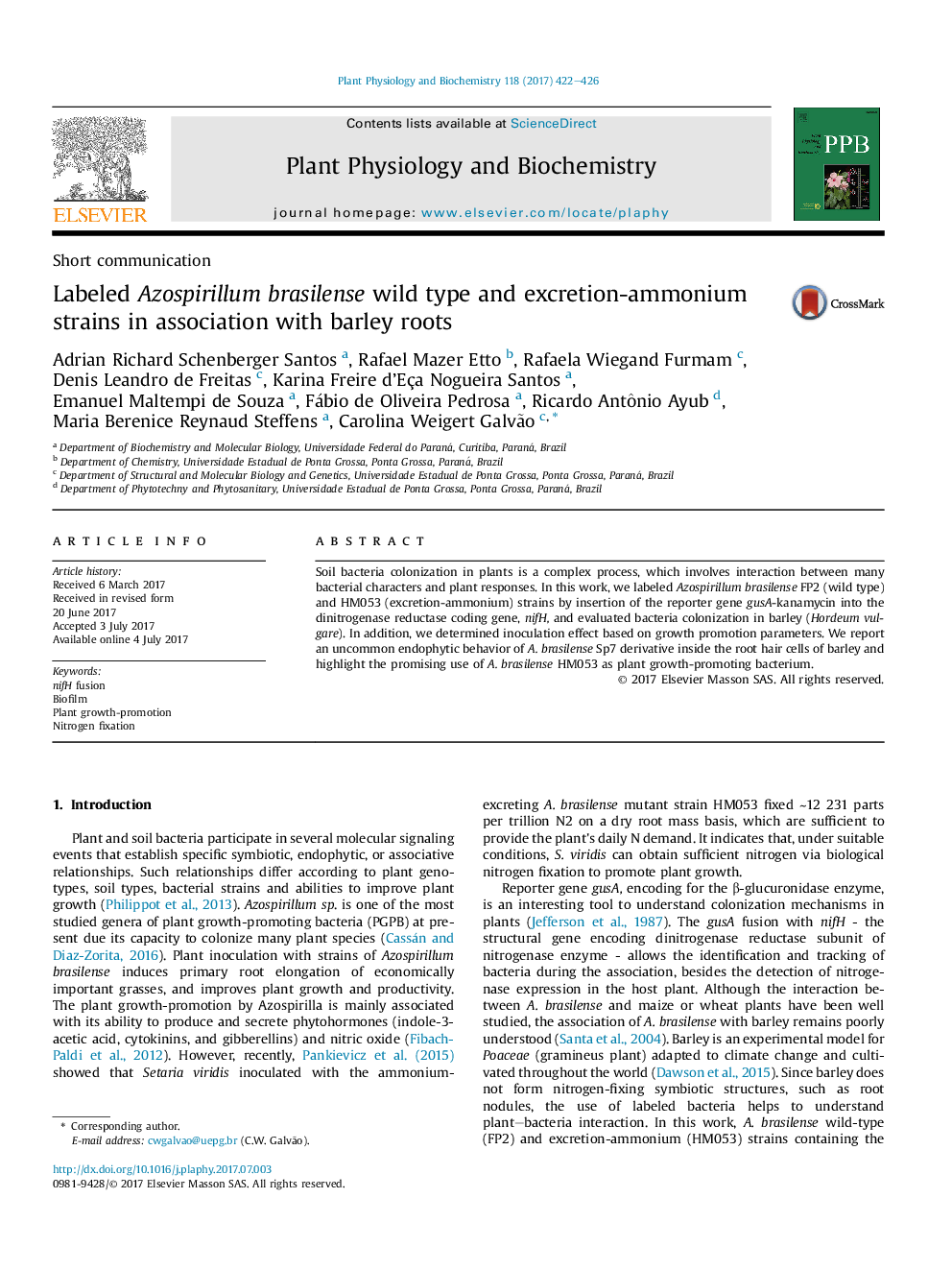| Article ID | Journal | Published Year | Pages | File Type |
|---|---|---|---|---|
| 5515459 | Plant Physiology and Biochemistry | 2017 | 5 Pages |
â¢A. brasilense strains containing the insertion of the reporter gene gusA into nifH gene were created.â¢A. brasilense wild type and excretion-ammonium strains expressed the nitrogenase enzyme inside barley root hair cells.â¢The excretion-ammonium strain of A. brasilense was characterized as a promising plant growth-promoting bacteria in barley.
Soil bacteria colonization in plants is a complex process, which involves interaction between many bacterial characters and plant responses. In this work, we labeled Azospirillum brasilense FP2 (wild type) and HM053 (excretion-ammonium) strains by insertion of the reporter gene gusA-kanamycin into the dinitrogenase reductase coding gene, nifH, and evaluated bacteria colonization in barley (Hordeum vulgare). In addition, we determined inoculation effect based on growth promotion parameters. We report an uncommon endophytic behavior of A. brasilense Sp7 derivative inside the root hair cells of barley and highlight the promising use of A. brasilense HM053 as plant growth-promoting bacterium.
